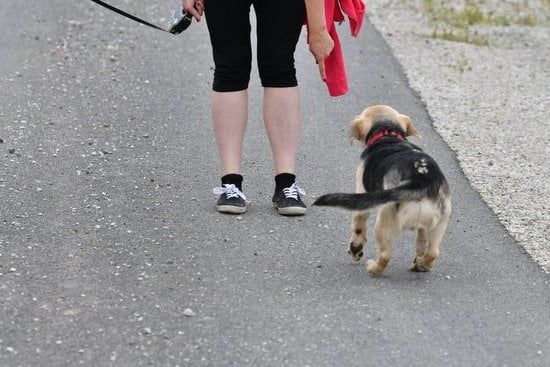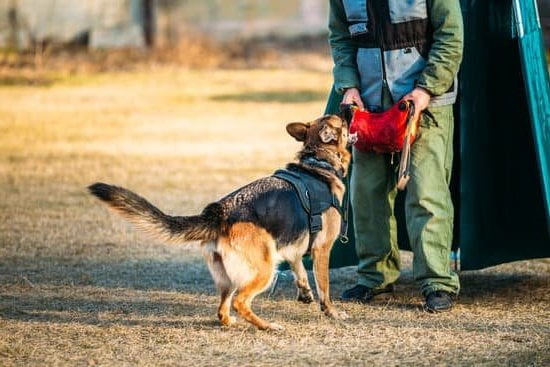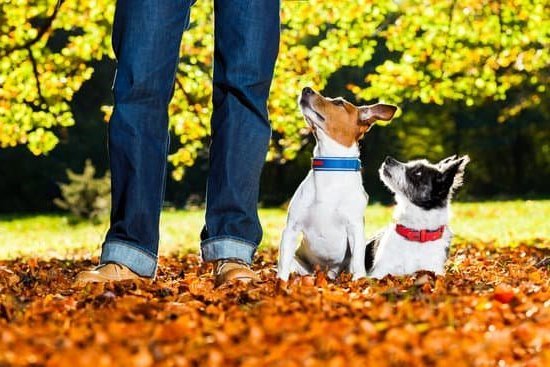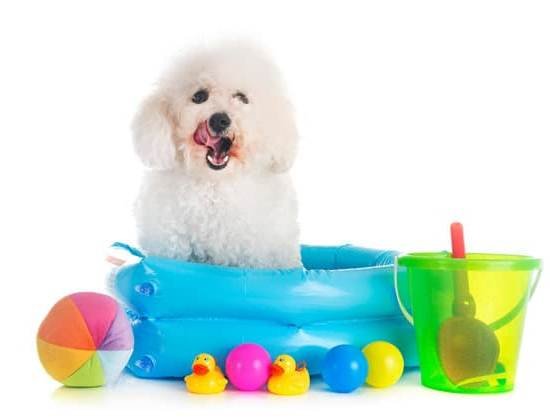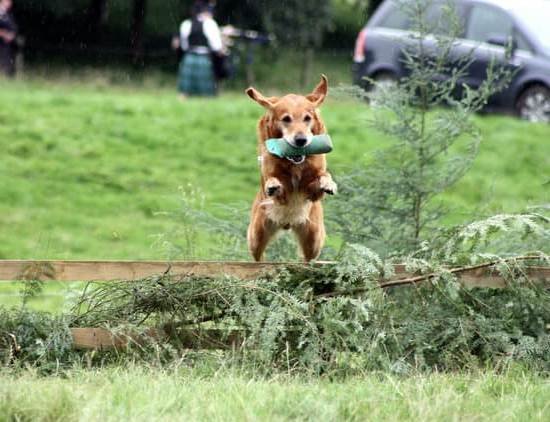House training a foster dog can be a challenging yet rewarding experience. It is crucial to provide a safe and comfortable environment for your new furry friend, ensuring their well-being and happiness. Understanding the significance of house training in helping your foster dog adjust to their new surroundings is essential for a successful transition.
One of the key aspects of fostering a dog is teaching them appropriate behaviors, including where and when to go potty. In this article, we will delve into the essential steps on how to house train a foster dog effectively. From understanding the history of your foster dog to utilizing positive reinforcement techniques, we will provide valuable insights and tips to help you navigate through this process with patience and dedication.
Creating a routine, setting up a designated potty area, and implementing crate training are just some of the strategies that can aid in house training your foster dog. By maintaining consistency, practicing patience, and using positive reinforcement tools, you can set your furry companion up for success in learning proper behavior patterns. Join us as we explore these methods in depth to help you establish a strong foundation for your foster dog’s house training journey.
Understanding the History of Your Foster Dog
Importance of Understanding Your Foster Dog’s History
When bringing a foster dog into your home, it is crucial to take the time to understand their past experiences. Many foster dogs come from uncertain or traumatic backgrounds, which can greatly impact their behavior and ability to learn new routines, including house training. By learning about your foster dog’s history, you can better empathize with their struggles and tailor your approach to house training accordingly.
Recognizing Triggers and Anxieties
Past experiences play a significant role in shaping a dog’s behavior, especially when it comes to house training. Some foster dogs may have triggers or anxieties related to certain environments or actions that remind them of negative past experiences. It is important to identify these triggers early on so that you can create a supportive and safe space for your foster dog as they go through the house training process.
Building Trust and Confidence
For many foster dogs, building trust and confidence is essential for successful house training. Dogs who have experienced trauma or neglect may struggle with feelings of insecurity or fear, making it challenging for them to relax and learn new behaviors. By showing patience, kindness, and consistency, you can help your foster dog feel safe and secure in their new environment, paving the way for successful house training outcomes.
Setting Up a Designated Potty Area
Fostering a dog can be a rewarding experience, but it also comes with its own set of challenges, such as house training. Setting up a designated potty area is essential when it comes to house training a foster dog. By creating a routine and sticking to it, you can help your foster dog learn where and when they should go potty. Here are some tips for setting up a designated potty area:
- Choose a specific spot in your yard or outdoor area where you want your foster dog to go potty. This spot should be easily accessible and away from high traffic areas.
- Take your foster dog to the designated potty area frequently, especially after meals, playtime, and naps. Use verbal cues such as “go potty” to encourage them to do their business in that spot.
- Consistency is key when it comes to creating a routine for your foster dog. Try to take them out at the same times every day so they can start associating those times with potty breaks.
In addition to setting up a designated outdoor potty area, it’s important to also create an indoor option for when your foster dog is unable to go outside. You can use pee pads or a designated indoor grass patch as an alternative potty area. Make sure to place these indoor options in the same location each time and praise your foster dog when they use them correctly.
Crate Training: Utilizing a Crate to Aid in House Training
Crate training can be a valuable tool when house training a foster dog. A crate provides a safe and comfortable space for your foster dog when you’re unable to supervise them closely. Here are some tips for using crate training effectively:
- Choose an appropriately sized crate for your foster dog – one that allows them enough room to stand up, turn around, and lie down comfortably.
- Introduce the crate gradually by making it a positive space with blankets, toys, and treats inside.
- Use the crate as a management tool – have your foster dog stay in the crate when you’re unable to watch them or during times when accidents are more likely to happen (e.g. overnight or when you’re not home).
Remember that it’s important not to use the crate as punishment; it should be seen as a safe haven for your foster dog. With consistency, patience, and positive reinforcement, crate training can help aid in the house training process for your furry friend.
Crate Training
Introducing your foster dog to the crate slowly and positively is key. Start by placing treats or their favorite toys inside the crate to encourage them to go in willingly. Gradually increase the amount of time they spend inside the crate with the door closed, making sure to always praise and reward them for good behavior. It’s important that the crate is associated with positive experiences, so never use it as a form of punishment.
Using the crate as part of a consistent routine can help speed up the house training process. When you are unable to directly supervise your foster dog, such as when you’re cooking dinner or running errands, putting them in their crate can prevent accidents from happening in the house.
Remember that crates should never be used as a long-term solution or as a means of confinement – they should only be utilized for short periods of time when necessary during the house training process. With patience and perseverance, crate training can be a beneficial tool in successfully house training your foster dog.
Positive Reinforcement
House training a foster dog can be a challenging yet rewarding experience. One of the most important aspects of successful house training is utilizing positive reinforcement techniques. Positive reinforcement involves rewarding your foster dog for exhibiting desired behaviors, such as going potty in the designated area or signaling when they need to go outside. By using positive reinforcement, you are not only encouraging good behavior but also building trust and a strong bond with your furry friend.
When implementing positive reinforcement for house training, it is essential to find out what motivates your foster dog. This could be treats, verbal praise, toys, or even a belly rub.
By figuring out what rewards are most enticing to your foster dog, you can effectively reinforce good behavior and make the house training process more enjoyable for both of you. Remember to reward your foster dog immediately after they exhibit the desired behavior to help them make the connection between their actions and the reward.
In addition to rewarding good behavior, it is crucial to avoid punishing your foster dog for accidents or mistakes during the house training process. Punishment can lead to fear, anxiety, and confusion in your foster dog, making it harder for them to learn where they should go potty.
Instead of focusing on the negative behaviors, redirect your attention to reinforcing positive behaviors and patiently guiding your foster dog towards success. With consistency, patience, and plenty of positive reinforcement, you will set up your foster dog for success in their house training journey.
Handling Accidents
Accidents are a natural part of the house training process, especially when dealing with foster dogs who may be unfamiliar with your home environment. It is essential to remember that accidents should not be punished harshly, as this can lead to anxiety and setbacks in the training process. Instead, it is crucial to remain calm and use accidents as an opportunity for positive reinforcement and learning.
When you catch your foster dog in the act of having an accident indoors, interrupt them by clapping your hands or making a sharp noise to startle them gently. Then, quickly take them outside to their designated potty area. If the accident has already occurred, simply clean up the mess without scolding your dog. Use an enzyme-based cleaner to eliminate any residual odors that may attract your dog back to the same spot.
Consistency plays a significant role in preventing accidents in the future. Make sure to take your foster dog outside frequently, especially after meals and naps, to give them ample opportunities to relieve themselves outdoors. By establishing a routine and closely monitoring your dog’s behavior, you can help reduce the likelihood of accidents happening inside the house.
| House Training Tip | Importance |
|---|---|
| Consistent Schedule | Helps prevent accidents by providing regular opportunities for your foster dog to go potty outdoors. |
| Positive Reinforcement | Encourages good behavior and motivates your dog to continue learning appropriate bathroom habits. |
| Crate Training | Aids in preventing accidents by utilizing a safe space for your foster dog when unsupervised. |
Consistency Is Key
When it comes to house training a foster dog, maintaining a consistent schedule is crucial for success. Dogs thrive on routine and having a set schedule helps them understand when it’s time to eat, go for walks, and potty. Consistency in feeding times, potty breaks, and training sessions can help your foster dog learn faster and avoid accidents in the house.
To establish a consistent schedule for your foster dog, start by feeding them at the same times every day. This will regulate their bowel movements and make it easier to predict when they need to go outside. Take your foster dog out for potty breaks first thing in the morning, after meals, before bedtime, and every few hours throughout the day. Be sure to praise and reward them when they do their business outside to reinforce good behavior.
In addition to regular potty breaks, consistency in training sessions is also important. Use the same cue words or phrases each time you take your foster dog outside to eliminate. This will help them associate those words with pottying outside. Remember that every dog learns at their own pace, so be patient and stick to your schedule. By maintaining consistency in your routine, you’ll set your foster dog up for success in house training.
| Consistency Tips | Benefits |
|---|---|
| Establish feeding times | Regulate bowel movements |
| Take out for regular potty breaks | Helps reinforce good behavior |
| Use consistent cue words | Associates words with pottying outside |
Patience and Perseverance
Staying Patient Throughout the Process
House training a foster dog can be a challenging endeavor, especially if the dog has had a troubled past or lacks previous training. It’s essential to approach this task with patience and understanding. Remember that every dog is different and will require varying amounts of time to adjust to house training routines. Stay calm and composed, even when accidents occur, as frustration can hinder progress.
Remaining Consistent in Your Approach
Consistency is key when it comes to house training any dog, including foster dogs. Make sure to stick to a routine schedule for feeding, potty breaks, and crate time. Dogs thrive on predictability, so maintaining consistency will help them understand what is expected of them. Keep in mind that sudden changes in routine can confuse your foster dog and make house training more challenging.
Perseverance Pays Off
Successfully house training a foster dog requires determination and perseverance. Understand that setbacks may occur, but it’s crucial not to give up. Continue providing positive reinforcement, rewards for good behavior, and gentle corrections for mistakes. With dedication and persistence, your foster dog will eventually learn the proper potty etiquette and become a well-trained companion in your home.
By adopting the right mindset of patience and perseverance, you can effectively house train your foster dog and set them up for success in their new environment. Remember that each small victory along the way is worth celebrating as you progress through this journey together. Building trust and creating a loving bond with your foster dog through consistent training will lead to a happy and harmonious relationship for years to come.
Celebrating Milestones
House training a foster dog can be a challenging but ultimately rewarding experience. By understanding the importance of house training for foster dogs and taking into account their unique histories, you can create a successful training plan that sets both you and your furry friend up for success.
Setting up a designated potty area and creating a routine is crucial in teaching your foster dog good bathroom habits. Utilizing crate training can also be incredibly helpful in house training, as it provides a safe space for your pup and reinforces positive behaviors. Positive reinforcement is key in encouraging good behavior, so make sure to praise and reward your foster dog when they go potty in the designated area.
Accidents are bound to happen during the house training process, so it’s important to handle them with patience and understanding. Consistency is key in maintaining progress, so stick to a schedule and continue reinforcing good habits. And don’t forget to celebrate milestones along the way.
Rewarding your foster dog for progress made in house training will not only boost their confidence but also strengthen the bond between you both. With the right mindset, patience, and perseverance, you can successfully house train your foster dog and set them up for a happy and healthy future.
Frequently Asked Questions
How Long Does It Take to Housebreak a Rescue Dog?
Housebreaking a rescue dog can vary in time depending on the dog’s background, age, and temperament. It can take anywhere from a few weeks to several months for a rescue dog to fully grasp the concept of potty training. Consistency, patience, and positive reinforcement are key in successfully housebreaking a rescue dog.
How Do I Stop My Rescue Dog From Peeing in the House?
To stop a rescue dog from peeing in the house, it is important to first rule out any medical issues that may be causing this behavior. Once medical reasons are eliminated, focus on providing regular potty breaks, creating a consistent routine, using positive reinforcement when they eliminate outside, and properly cleaning up indoor accidents to remove any lingering scent.
Are Foster Dogs Potty Trained?
Not all foster dogs come potty trained as their backgrounds and past experiences vary. Some foster dogs may already have some level of potty training from previous homes or experiences while others may not be trained at all.
It’s important for foster parents to work with each individual dog patiently and consistently to establish good potty habits or reinforce existing ones through positive reinforcement techniques.

Welcome to the blog! I am a professional dog trainer and have been working with dogs for many years. In this blog, I will be discussing various topics related to dog training, including tips, tricks, and advice. I hope you find this information helpful and informative. Thanks for reading!

